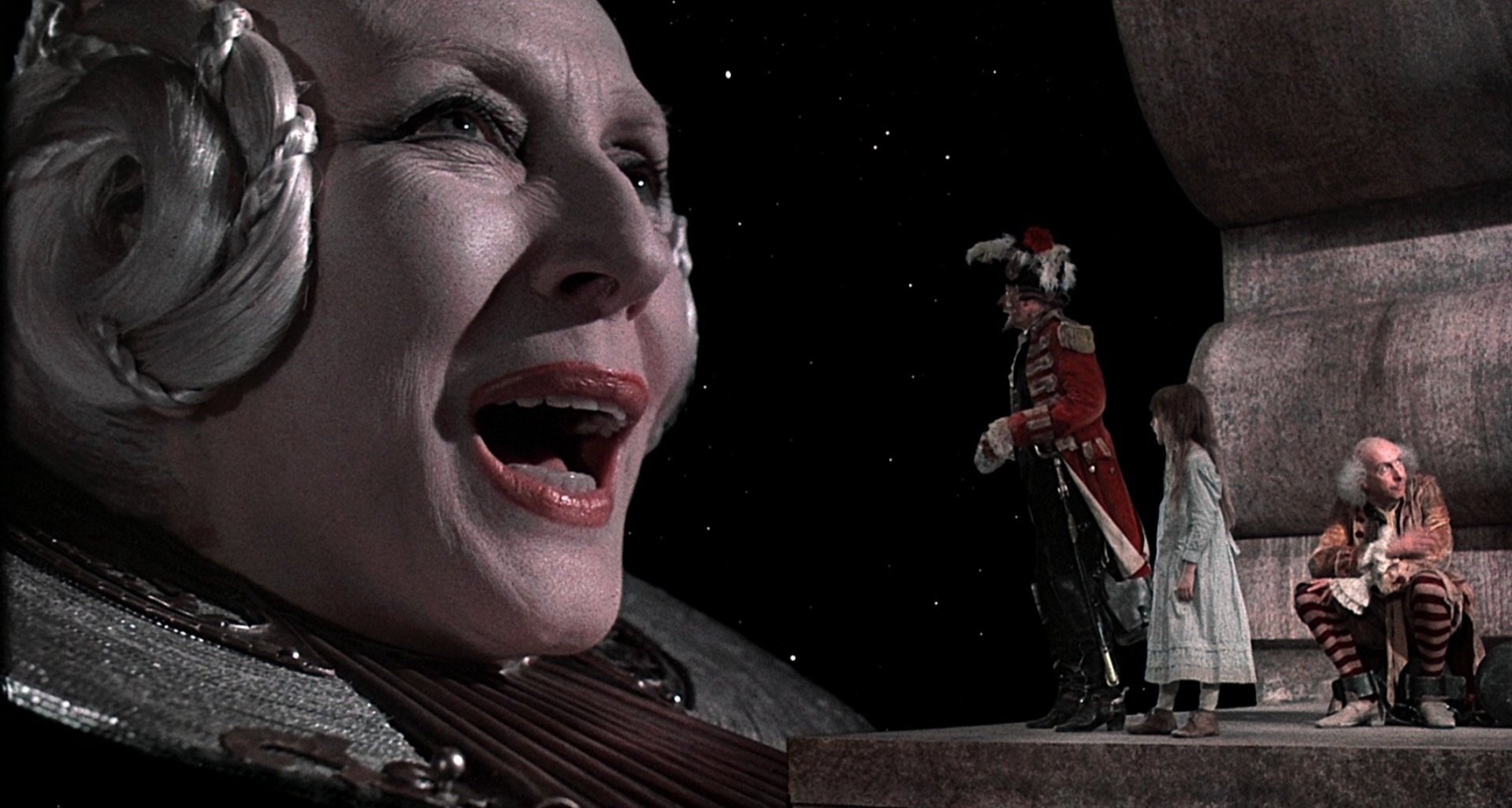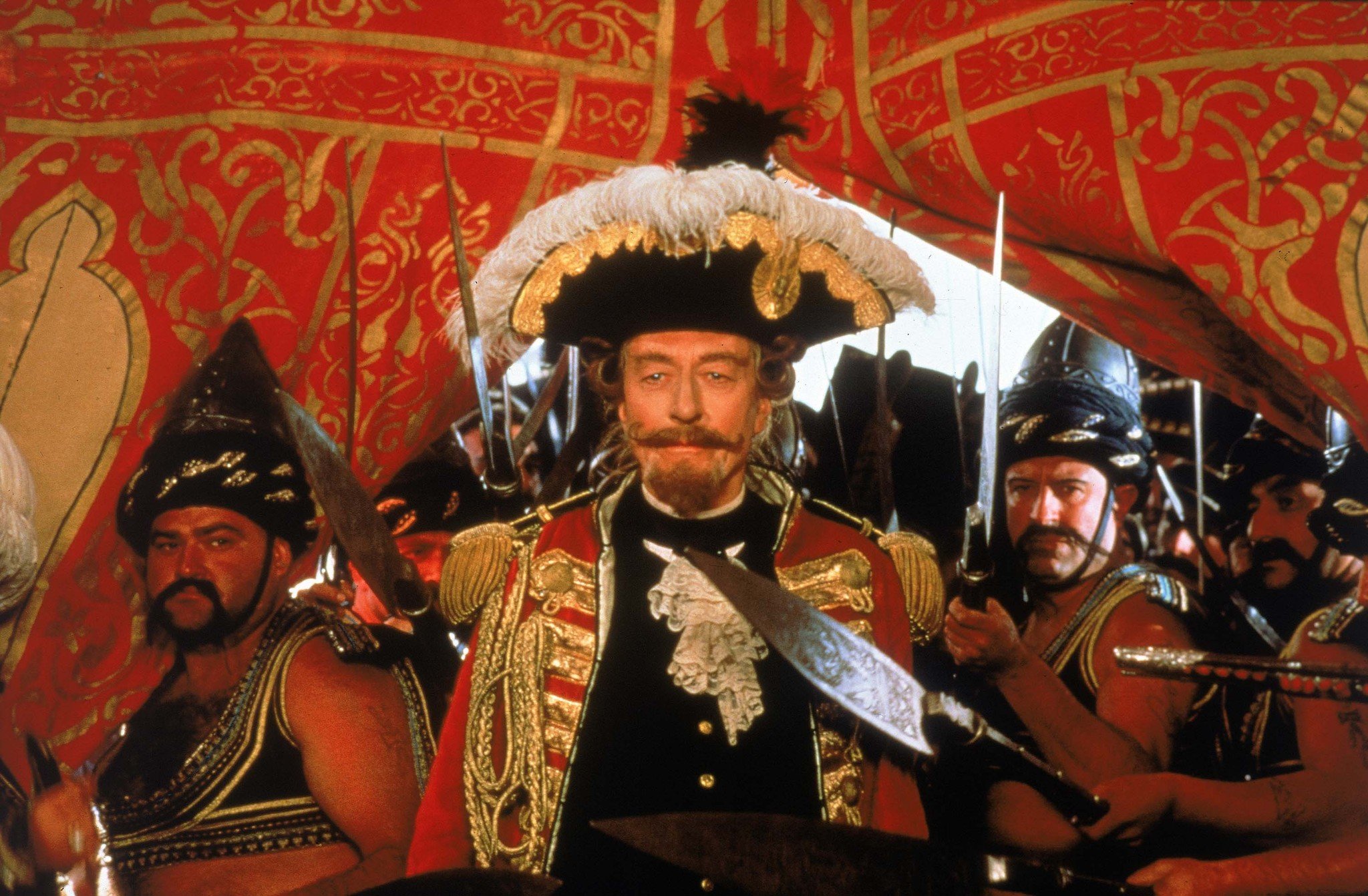Grasp The Nettle! The Wondrous Balderdash of Baron Munchausen
I was one of those kids at school who needed the crayons to be taken away from them. My mom tells the story of my first day of school, and how I cried at the end of the day when I wasn’t able to bring the picture I’d drawn home with me. I was the arty kid in high school, and the even artier kid by the time I got to enrolling into a Fine Art degree in college. For as long as I can remember, I’ve always made things. But when I think about the kinds of things which have influenced me along the way, one of the earliest memories I have is of gloomy Sunday afternoons growing up in the bleak seventies of rural England, and watching Monty Python’s Flying Circus with my Dad.
I remember all the classic sketches of course. The Dead Parrot. The Lumberjack. The Spanish Inquisition. The Ministry of Silly Walks and my favorite, The Argument Clinic. My Dad would roar with laughter at the deeply English silliness of it all, contagious to such an extent where even my teenage daughter today has the same dark sense of humor. I loved the absurdly elaborate language and the lampooning of institutions of government and faith. But what I loved most about it was the visual language which wrapped around all the sketches. The ornate Victorian typography and the collaged society gentlemen whose teeth doubled as music hall organs and whose feet would descend and crush all beneath them. For me, the animations were always the best part of the show, and by the time the Pythons had graduated to the movies, there was even more of it. Movies such as And Now For Something Completely Different and The Meaning Of Life doubled down on the particularly English form of animation which, in true Python fashion, wasn’t created by an Englishman at all.
It was the Python who had the least screen time that I fell in love with. Terry Gilliam’s wonderfully surreal animations were always the standout parts of both the show itself and their later movies. So when he began to direct full-length live action movies, bringing the chaos of what had always been in his head to the screen, it was, and still is, a complete treat. Gilliam’s work was absolutely instrumental in shaping the kind of work I’ve loved, and still love to do. It was deeply, awkwardly British, but held an outsider’s absurdly surreal perspective on all the ridiculousness and pomp of empire. And most importantly, it lacked any real polish. The animation was often as crude as the cutouts themselves, with the tops of heads flipping open, hands grasping at the loosest of female clothing, and the ever-present cannons waiting to dispense with our protagonists.
My Dad and I had watched Monty Python and The Holy Grail together, but it wasn’t until Gilliam’s 1981 Time Bandits that I really fell in love with the animations that had now become real life worlds. I must have worn out the VHS tape we had from when it aired on television, and I only recently re-watched it for the first time in probably over thirty years. It’s still wonderful, and it made me laugh all over again in all the same places. The special effects don’t hold up, but they don’t need to. The strength of the story, and the wonderful performances from the cast, especially the bandits themselves, more than hold everything together. It brought me back to my childhood, and watching the film over and over again, and always finding something new. There’s some highly memorable set pieces within it, my (and probably everyone’s) favorite being when the ship the bandits find themselves on ends up being a giant’s hat as he walks out of the ocean with the ship still rattling around strapped to his head. And it’s these images which stay with you in Gilliam’s films. The absurdly wonderful images of a fantasy world rendered completely real, but still retaining all the spectacle of a story that’s always that little bit too tall of a tale.
And of course, when it comes to tall tales, no-one told them bigger than Baron Munchausen. By the late eighties Gilliam’s films had just gotten exponentially more complicated each time, but 1988’s The Adventures of Baron Munchausen, his sequel to Brazil, is probably the most challenging of them all, and Gilliam, often beset by production difficulties, had earned a reputation as a studio warmonger when it came to getting his films made. But production difficulties only matter to those that care, and the results of what ends up in the movie speak for themselves. And Baron Munchausen speaks volumes.
When I write these reviews, I often include a recap of the plot, but doing that here would never do justice to the film, or to Gilliam’s story. It is so wonderful, so fantastic, so full of buckle and swash that you should just watch it for yourself. And if you’re one of those who loved it the first time around, treat yourself to watching it again and you won’t be disappointed. It has all the absurdity of the first time you saw it. The incredible turns by the ensemble cast, especially (the uncredited) King of the Moon by Robin Williams, Gilliam’s Python pal Eric Idle as the speedster Berthold, Oliver Reed as a deranged god of fire Vulcan, and of course, the wonderful John Neville as Munchausen himself, in all his glorious infallibility. The score swells and soars as Munchausen’s odyssey takes him across space and time in service of saving the day.
Whenever I watch The Adventures of Baron Munchausen, or Time Bandits, I’m completely transported back to watching Python with my Dad on a gloomy Sunday afternoon in front of the fireplace as a kid. And just smiling through the whole thing. Except this time now I’m the Dad, passing it on to my daughter. And those really are the best moments in the movies, and in all stories. The ones which not only take you back, but propel you forward. The ones you can pass on to those who’ll follow you. The ones in which you see yourself in the present, but also your past self in others. And especially the ones which never lose their sense of absurd wonder at what just might be.
Latest Articles











































